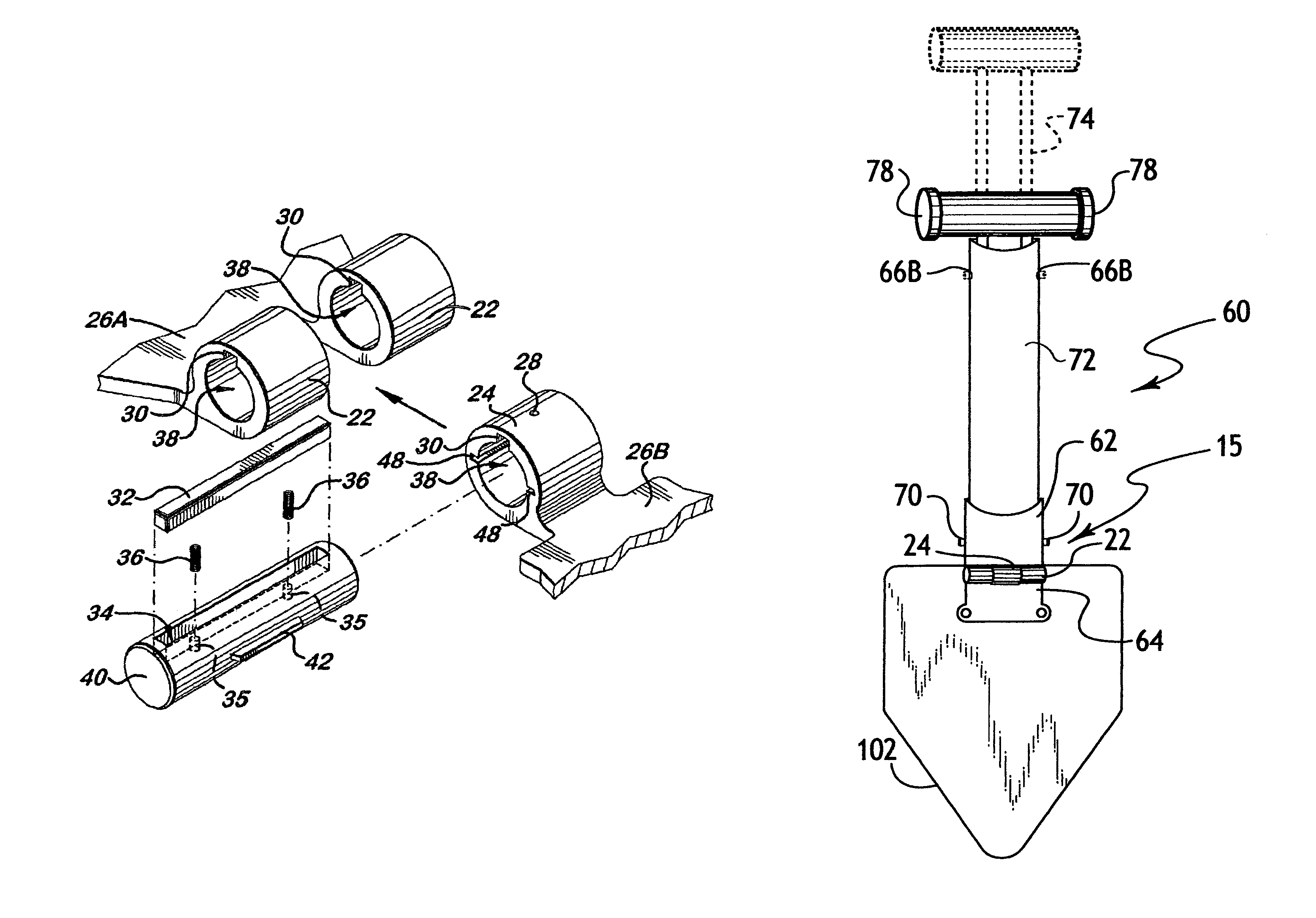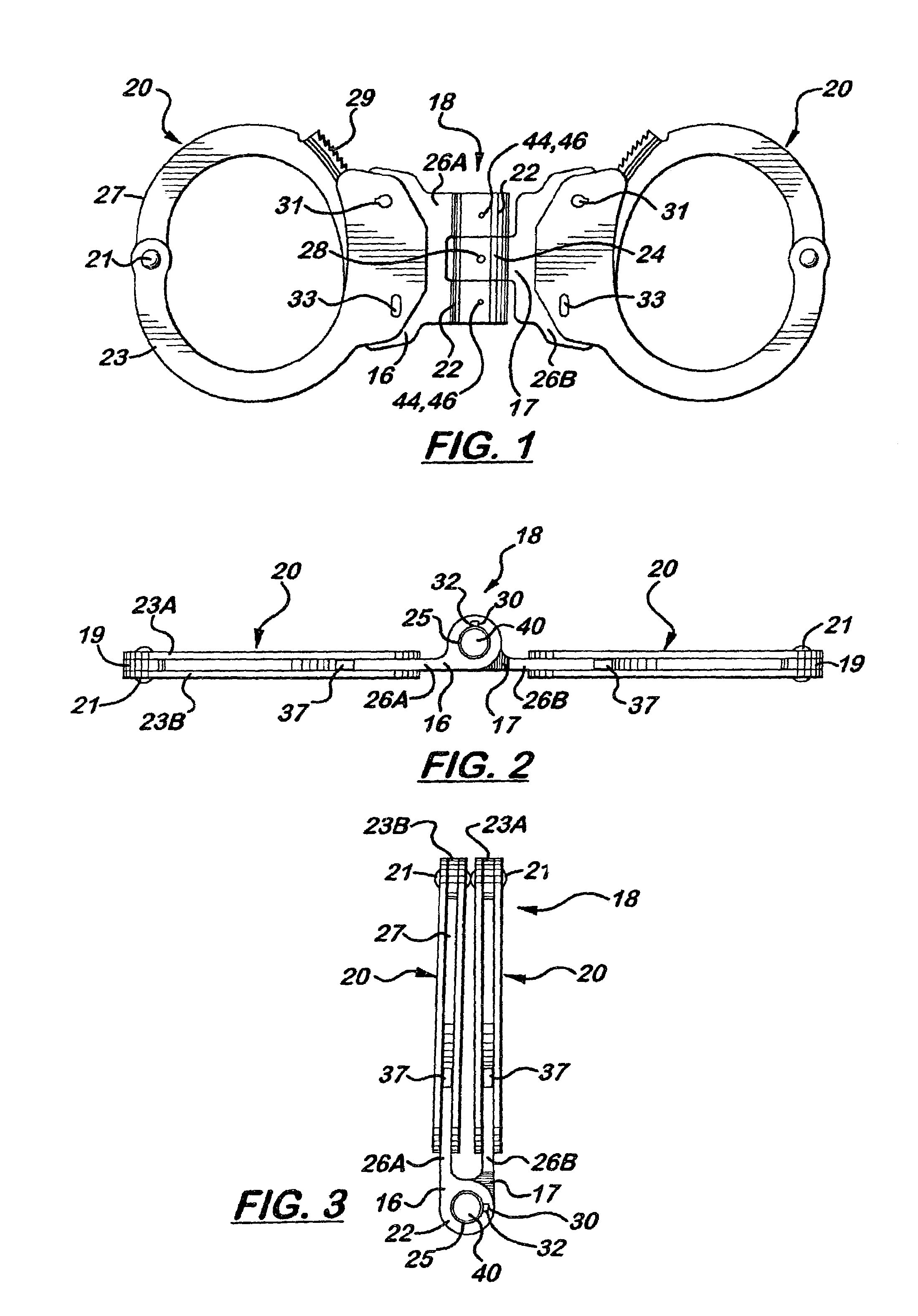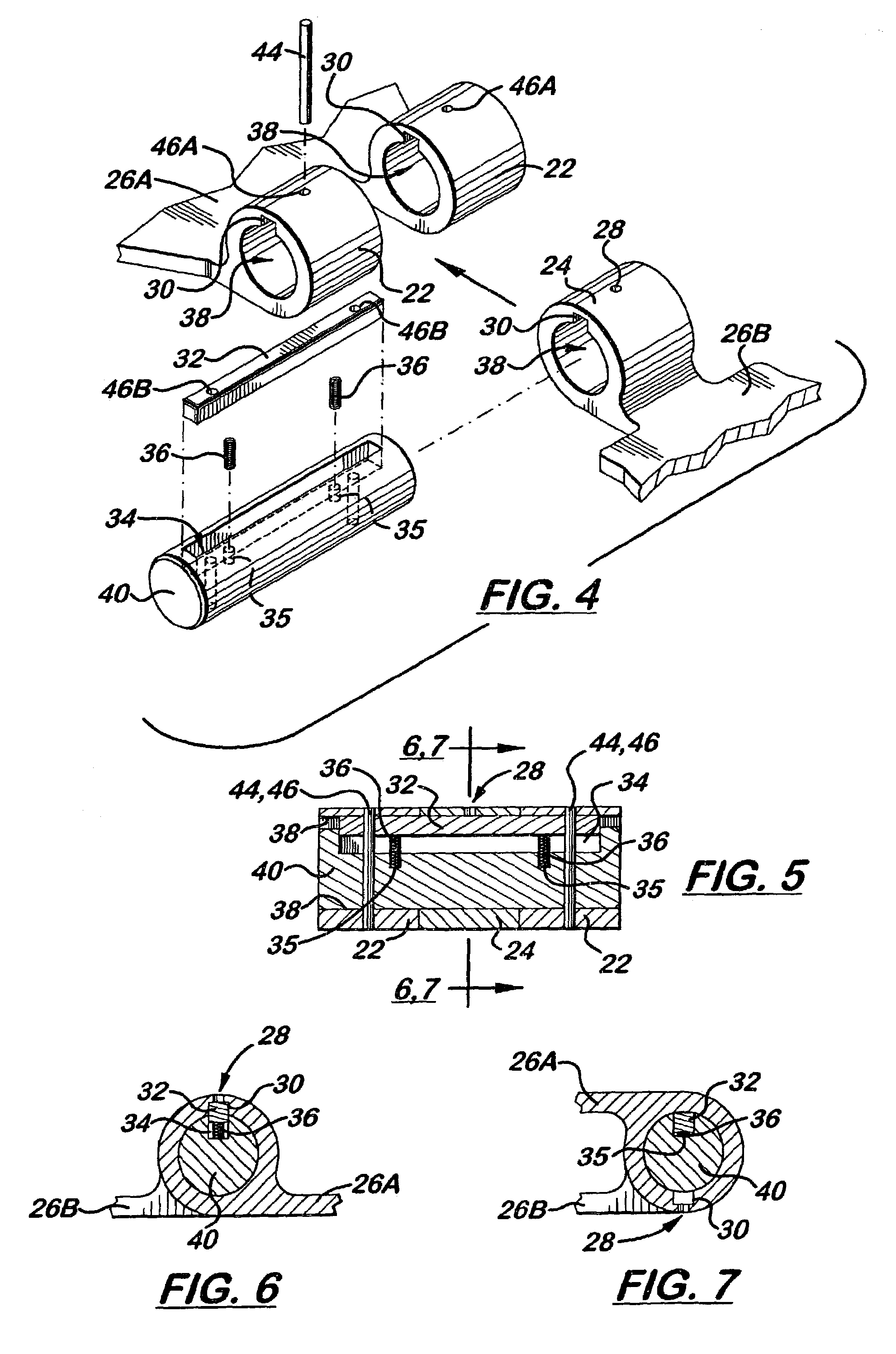Folding tools with locking hinges
a technology of locking hinges and folding tools, which is applied in the field of handcuffs, can solve the problems of not being as easy to use or apply to persons being restrained, the difficulty of applying and locking the rigid handcuffs on a struggling suspect, and the difficulty of folding the rigid handcuffs, etc., to achieve convenient storage and carrying, easy and quick folding, and convenient storage and storage
- Summary
- Abstract
- Description
- Claims
- Application Information
AI Technical Summary
Benefits of technology
Problems solved by technology
Method used
Image
Examples
Embodiment Construction
[0068]It should be understood that the following description of some presently preferred embodiments of the present invention is merely representative of many possible embodiments and thus is not intended to limit the scope of the present invention. In the following description, like structures will be referred to by similar numerical designations. In some figures, some features may be omitted to clarify the illustration of the remaining features. The term “and / or” is used in the conventional sense, meaning A or B alone or A+B.
[0069]Turning now to the drawings, FIGS. 1 and 2 illustrate a hinge lock safety cuff 18 using the lockable hinge of the present invention in the open and locked position. The invention employs conventional (swing-through) handcuff wrist bracelets 20 which are adapted to be connected with hinges. Suitable bracelets are manufactured by Smith and Wesson and many other suppliers, and are disclosed in U.S. Pat. No. 5,205,142, which is incorporated herein by referen...
PUM
 Login to View More
Login to View More Abstract
Description
Claims
Application Information
 Login to View More
Login to View More - R&D
- Intellectual Property
- Life Sciences
- Materials
- Tech Scout
- Unparalleled Data Quality
- Higher Quality Content
- 60% Fewer Hallucinations
Browse by: Latest US Patents, China's latest patents, Technical Efficacy Thesaurus, Application Domain, Technology Topic, Popular Technical Reports.
© 2025 PatSnap. All rights reserved.Legal|Privacy policy|Modern Slavery Act Transparency Statement|Sitemap|About US| Contact US: help@patsnap.com



